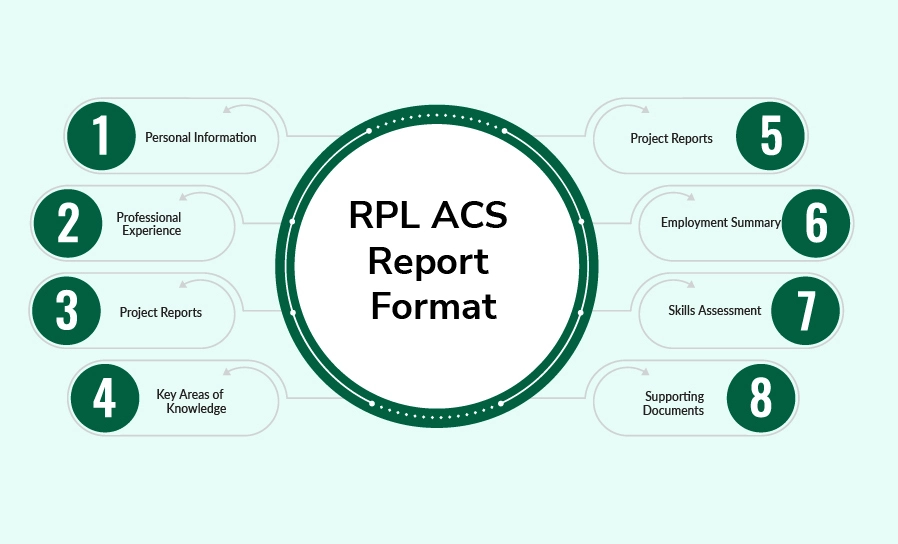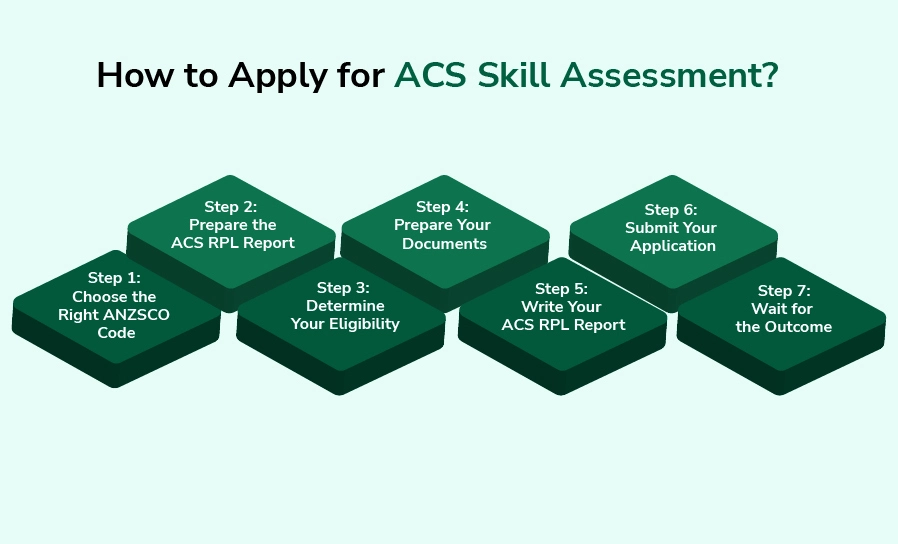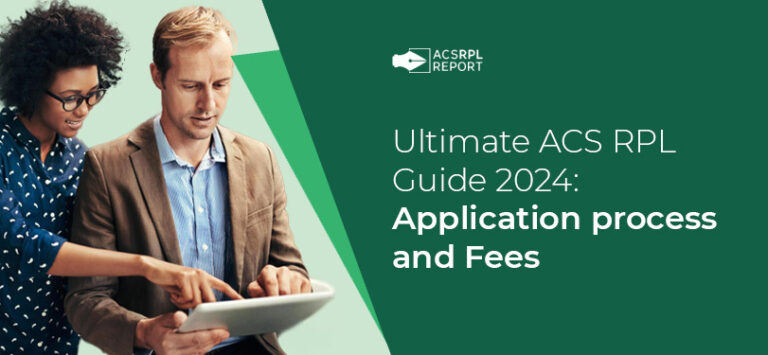If you’re an IT professional dreaming of migrating to Australia, you’ve likely come across the term ACS RPL. But what exactly is it, and why is it important for your migration journey? In this comprehensive guide, we’ll dive deep into everything you need to know about the ACS RPL, including its purpose, requirements, and how to apply.
Australia’s booming tech industry attracts skilled professionals from around the world. However, securing a skilled migration visa can be challenging for individuals without formal ICT qualifications. This is where the Recognition of Prior Learning (RPL) for ACS plays a crucial role.
The Australian Computer Society (ACS) offers the RPL pathway to assess the skills of ICT professionals who lack recognised educational credentials but possess relevant work experience. This comprehensive guide will explain everything about ACS RPL, from its purpose and requirements to the application process.
Whether you’re wondering what RPL is, how to fill out the ACS RPL form, or who needs an ACS RPL report, this guide covers you.
What is the ACS RPL?
The ACS RPL (Recognition of Prior Learning) Report is a document that allows ICT professionals without formal IT qualifications to demonstrate their knowledge and expertise in the field.
This report is an alternative pathway for those who want to apply for Australian skilled migration under the ACS skill assessment process. The ACS evaluates an applicant’s work experience and skills to determine their eligibility for migration.
What is RPL?
RPL stands for Recognition of Prior Learning. It is a method of assessing an individual’s skills and knowledge gained through work experience, informal training, or other non-academic means.
In the context of the ACS, RPL evaluates the competencies of IT professionals who may not possess formal qualifications but have relevant experience in their field.
What is an ACS RPL Report, and Why is It Required?
Recognition of Prior Learning (RPL) is a report submitted to the Australian Computer Society (ACS) by individuals seeking to migrate to Australia and advance their careers in ICT-related fields. This report is specifically for those who do not hold an ICT qualification or come from a non-ICT background.
We offer top-quality RPL reports crafted by experienced writers. The ACS Skill Assessment allows applicants to showcase their ICT knowledge and skills through the RPL report, even if they lack formal ICT qualifications or education.
As part of the RPL application, candidates must provide two project reports using the ACS Recognition of Prior Learning Form. Each report should comprehensively describe their career and employment history, including sufficient details to illustrate how they have applied ICT knowledge in real-world scenarios.
The RPL Project Report must be entirely original. Applicants must include enough detail to demonstrate their ICT skills and expertise while properly citing any referenced or paraphrased material.
Who needs the ACS RPL Report?
Not everyone applying for an ACS skills assessment needs to submit an ACS RPL report. Here’s who it’s for:
- Non-IT Graduates: If you hold a degree in a field unrelated to IT but have significant work experience in the IT industry, you’ll need to submit an ACS RPL report.
- IT Graduates with Insufficient IT Content: If your degree has less than 65% IT-related content, the ACS may require you to submit an RPL ACS report.
- Candidates Without Formal Qualifications: If you don’t have a degree but have extensive work experience in IT, the RPL pathway is your route to obtaining an ACS skills assessment.
RPL ACS Report Format

The ACS RPL Report must be formatted according to ACS guidelines. It consists of the following sections:
1. Personal Information
This includes your name, contact details, and any relevant identification numbers.
2. Professional Experience
A detailed account of your work history, including job titles, responsibilities, and duration of employment.
3. Project Reports
A minimum of two project reports that demonstrate your skills and knowledge in the IT field. Each project report should include:
- Project title
- Duration of the project
- Your role and responsibilities
- Technologies used
- Outcomes and achievements
4. Key Areas of Knowledge
Applicants must outline how they acquired ICT knowledge through work experience. This includes:
- ICT Professional Knowledge: This includes topics like ethics, professionalism, teamwork, and communication.
- ICT Management Knowledge: This covers areas such as IT project management, IT service management, and security management.
You’ll need to write two essays, each between 1,000 and 2,000 words, explaining how your experience aligns with these areas. The essays should be detailed, well-structured, and supported by evidence.
5. Project Reports
Applicants must submit two project reports that demonstrate their hands-on ICT experience. The projects should:
- Highlight the applicant’s role and responsibilities.
- Demonstrate the application of ICT knowledge.
- Showcase problem-solving skills and innovation.
- Be written in first-person and follow a structured format.
6. Employment Summary
This section provides an overview of an applicant’s employment history, including job titles, responsibilities, and duration.
7. Skills Assessment
A summary of how your experience aligns with the ACS’s core ICT competencies.
8. Supporting Documents
Any additional documents that support your claims, such as reference letters, pay slips, or employment contracts.
ACS Rules and Regulations
Before submitting an ACS RPL application, it is crucial to understand the ACS assessment rules:
- Work experience requirement: The work experience must be relevant to the nominated occupation.
- Plagiarism-Free Report: ACS strictly prohibits copied content. The report must be original and reflect the applicant’s real experience.
- ICT Content in Work Experience: At least 65% of job responsibilities must be related to ICT tasks.
- Professional Year Consideration: Completion of an ACS-accredited professional year programme may add additional points.
Applicants who fail to follow these regulations risk rejection or even bans from ACS.
Required Documents for ACS RPL Application
- Proof of Identity
To begin your application, you must provide two forms of photo identification along with documentation verifying any name changes due to marriage or other reasons.
- Two RPL Project Reports
As part of your ACS Migration Skills Assessment, you must demonstrate your IT knowledge by submitting two project reports using the ACS Recognition of Prior Learning Form. These reports must be uploaded during your online application.
- One report should detail a project completed within the last two years.
- The other should describe a project undertaken within the past four years.
- Applicants in non-project roles must outline their work experience and highlight the challenges faced.
- Professional Currency Evidence
You must provide at least two pieces of evidence demonstrating your skills and relevance in the nominated ANZSCO code.
- Work Experience Verification
To validate your paid employment, you must submit two types of evidence:
- Employer-issued documents confirming your employment duration and key details. (See Employment References for specific requirements.)
- Proof of salary payments aligning with the required skill level for your position. (See Payment Evidence for details.)
- Optional Vendor Certifications (For DevOps & Cyber Security)
ACS now accepts vendor certification evidence specifically for DevOps and Cyber Security ANZSCO codes.
How to Apply for ACS Skill Assessment?

Applying for an ACS skills assessment through the RPL pathway involves several steps:
Step 1: Choose the Right ANZSCO Code
Select the appropriate ANZSCO (Australian and New Zealand Standard Classification of Occupations) code that best matches your skills and work experience.
Step 2: Prepare the ACS RPL Report
- Write two project reports demonstrating your ICT expertise.
- Ensure the report adheres to ACS guidelines.
- Avoid plagiarism, as ACS uses advanced plagiarism detection tools.
Step 3: Determine Your Eligibility
Before applying, ensure you meet the eligibility criteria for the RPL ACS pathway. This includes having at least 6 years of relevant work experience if you don’t have an IT degree, or 2 years of experience if your degree has insufficient IT content.
Step 4: Prepare Your Documents
Gather all the required documents, including employment references, academic transcripts, and your passport copy. Ensure your documents are accurate and up-to-date.
Step 5: Write Your ACS RPL Report
Draft your ACS RPL report, including the key areas of knowledge essays and project reports. Make sure your report is well-structured, detailed, and free of plagiarism.
Step 6: Submit Your Application
Complete the ACS RPL form and submit it along with your report and supporting documents through the ACS online portal. Pay the required application fee. Apply for processing.
Step 7: Wait for the Outcome
The ACS will review your application and provide an outcome within 8–12 weeks. If your application is successful, you’ll receive a positive skills assessment, which you can use for your visa application.
If additional information is required, ACS will notify the applicant. Once assessed, ACS will issue a formal assessment outcome letter.
Conclusion
The ACS RPL pathway is a valuable opportunity for IT professionals without formal qualifications to demonstrate their skills and pursue their dream of migrating to Australia.
By understanding what is RPL, preparing a strong ACS RPL report, and following the application process, you can increase your chances of a successful skills assessment.
Remember, the key to a successful RPL ACS application lies in thorough preparation, attention to detail, and adherence to ACS rules and regulations. Whether you’re filling out the ACS RPL form or drafting your project reports, make sure every step is carefully executed.
With this guide, you now have a clear roadmap to navigate the ACS RPL process. Good luck with your application, and may your journey to Australia be a success.
FAQ
1. How do I write RPL for ACS?
To write an ACS RPL (Recognition of Prior Learning) report, you must follow ACS guidelines and include:
- Section 1: A detailed Key Areas of Knowledge explanation aligning your skills with the ACS Core Body of Knowledge.
- Section 2: Two project reports demonstrating how you applied ICT skills in real-world projects.
- Use clear, structured descriptions with evidence of your role, problem-solving, and technology use.
2. How much is the RPL fee for ACS?
The ACS RPL assessment fee varies based on application type. As of 2024:
- Standard RPL Assessment Fee: AUD 550
- Review Application Fee: AUD 395
- Appeal Fee: AUD 395
Fees are subject to change, so always check the official ACS website for updated pricing.
3. Is RPL legal in Australia?
Yes, RPL is legally recognised in Australia. The Australian Computer Society (ACS) has approved it as an assessment pathway for applicants without ICT-related degrees but with relevant work experience.
4. What is the RPL screening process?
ACS follows a strict screening process:
- Submission Review: ACS evaluates if your report follows RPL guidelines.
- Plagiarism Check: ACS uses Turnitin to detect copied content.
- Skills Assessment: Your experience is compared against ANZSCO job roles.
- Decision Notification: ACS provides an outcome via email.
5. What is the format of the RPL report?
An ACS RPL report has two key sections:
- Key Areas of Knowledge: Demonstrating how your skills align with ACS requirements.
- Project Reports: Two detailed projects showing your ICT expertise in professional environments.
- Use formal language, structured headings, and precise technical details.
6. What evidence is required for RPL?
You must submit:
- Employment references verifying ICT-related work experience.
- Project reports detailing tasks, technologies, and responsibilities.
- Academic transcripts (if applicable).
- Identification documents such as a passport and CV.
7. How do I write an application for RPL?
To apply for ACS RPL, follow these steps:
- Create an account on the ACS Migration Skills Assessment portal.
- Complete the RPL template with detailed responses.
- Attach supporting documents (CV, employment letters, passport, etc.).
- Pay the assessment fee and apply.
8. Can I apply for PR with RPL?
Yes, a positive RPL assessment from ACS can be used for an Australian skilled migration visa. However, you must also meet other criteria, such as points test requirements and occupation eligibility.
9. What is the eligibility for RPL?
ACS RPL is for candidates who:
- Have no ICT qualification but at least 6 years of relevant ICT experience OR
- Have a non-ICT qualification with at least 4 years of relevant ICT experience.



